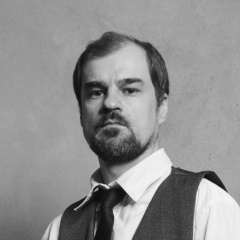Не люблю прямые исторические аналогии, особенно идеологические спекуляции на их тему, этакое злокачественное актуализирование:
- А правда, восстание на Сенатской площади похоже на Майдан?
- Нет, не похоже...
- Студенты начала XX века были аналогом наших "оранжевых"!
- Нет! Не были.
Но некоторые сюжеты волей-неволей рождают прямые ассоциации. Вот изучал статью Сергея Нефедова, который в последние годы после своих факторных анализов ударился в политическую историю, про московских студентов 1904 года и как тут не вспомнить Киев, начало 2014 года. Поневоле придет на ум! Москвичи, кстати, были намного агрессивнее питерских студентов. Недаром так много боевиков эсеров вышло именно из московских вузов.
"Несмотря на угрозы эсеров, обер-полицмейстер Трепов лично командовал полицейским нарядом у губернаторского дворца. Он докладывал руководству МВД, что первый ряд полицейских был опрокинут ударами палок, кистеней и железных прутьев, и приказ обнажить шашки был отдан им лишь после первого выстрела. Студенты впоследствии издали брошюру, в которой утверждали, что они стреляли в целях самозащиты и что полицейские тоже стреляли в демонстрантов. Однако различные комиссии (в том числе и общественные) зафиксировали, что огнестрельные ранения были только у полицейских. Полицейские специально обращали внимание зрителей на выстрелы из толпы; один околоточный даже пожаловался публике, что «господа студенты изволят стрелять»"
- А правда, восстание на Сенатской площади похоже на Майдан?
- Нет, не похоже...
- Студенты начала XX века были аналогом наших "оранжевых"!
- Нет! Не были.
Но некоторые сюжеты волей-неволей рождают прямые ассоциации. Вот изучал статью Сергея Нефедова, который в последние годы после своих факторных анализов ударился в политическую историю, про московских студентов 1904 года и как тут не вспомнить Киев, начало 2014 года. Поневоле придет на ум! Москвичи, кстати, были намного агрессивнее питерских студентов. Недаром так много боевиков эсеров вышло именно из московских вузов.
"Несмотря на угрозы эсеров, обер-полицмейстер Трепов лично командовал полицейским нарядом у губернаторского дворца. Он докладывал руководству МВД, что первый ряд полицейских был опрокинут ударами палок, кистеней и железных прутьев, и приказ обнажить шашки был отдан им лишь после первого выстрела. Студенты впоследствии издали брошюру, в которой утверждали, что они стреляли в целях самозащиты и что полицейские тоже стреляли в демонстрантов. Однако различные комиссии (в том числе и общественные) зафиксировали, что огнестрельные ранения были только у полицейских. Полицейские специально обращали внимание зрителей на выстрелы из толпы; один околоточный даже пожаловался публике, что «господа студенты изволят стрелять»"
I do not like direct historical analogies, especially ideological speculations on their subject, a kind of malignant actualization:
- Is it true that the uprising on Senate Square is similar to the Maidan?
- No, not like ...
- Students of the beginning of the XX century were an analogue of our “orange”!
- Not! Were not.
But some stories, perforce, give rise to direct associations. I studied the article by Sergey Nefedov, who in recent years after his factor analysis hit the political history, about Moscow students in 1904 and how not to recall Kiev, the beginning of 2014. Willfully come to mind! Muscovites, by the way, were much more aggressive than St. Petersburg students. It is not without reason that so many Socialist-Revolutionary militants have left precisely Moscow universities.
“Despite the threats of the Socialist Revolutionaries, Chief Police Officer Trepov personally commanded a police outfit at the governor’s palace. He reported to the leadership of the Ministry of Internal Affairs that the first row of police officers had been knocked over with blows of sticks, knives and iron rods, and the order to draw drafts was given to them only after the first shot. Students subsequently they published a pamphlet stating that they fired for self-defense and that the police also fired at the demonstrators, however, various commissions (including public ones) recorded that only the policemen had gunshot wounds. crowds; one fellow even complained to the public that "gentlemen, the students are willing to shoot" "
- Is it true that the uprising on Senate Square is similar to the Maidan?
- No, not like ...
- Students of the beginning of the XX century were an analogue of our “orange”!
- Not! Were not.
But some stories, perforce, give rise to direct associations. I studied the article by Sergey Nefedov, who in recent years after his factor analysis hit the political history, about Moscow students in 1904 and how not to recall Kiev, the beginning of 2014. Willfully come to mind! Muscovites, by the way, were much more aggressive than St. Petersburg students. It is not without reason that so many Socialist-Revolutionary militants have left precisely Moscow universities.
“Despite the threats of the Socialist Revolutionaries, Chief Police Officer Trepov personally commanded a police outfit at the governor’s palace. He reported to the leadership of the Ministry of Internal Affairs that the first row of police officers had been knocked over with blows of sticks, knives and iron rods, and the order to draw drafts was given to them only after the first shot. Students subsequently they published a pamphlet stating that they fired for self-defense and that the police also fired at the demonstrators, however, various commissions (including public ones) recorded that only the policemen had gunshot wounds. crowds; one fellow even complained to the public that "gentlemen, the students are willing to shoot" "
У записи 9 лайков,
0 репостов.
0 репостов.
Эту запись оставил(а) на своей стене Константин Макаров





























